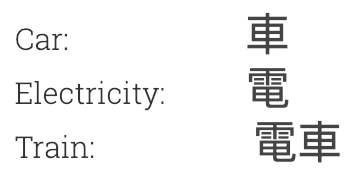Automated challenge balancing to increase student engagement
Summary
Mastering the Japanse writing system can be a tedious task. To quickly recognise and comprehend all kanji requires, above all, a lot of repetition. So what if we could make it fun?
Inspired by an insight from the field of gaming, we aim to improve student (or player) engagement with our kanji e-tutoring system by providing challenges at exactly the right challenge level to keep them engaged. The core idea is that if students remain engaged, this will ultimately translates itself into an increase in time spent using the e-tutoring system – and therefore the level of mastery of the kanji writing system.
The Context

The Problem
Maybe even more so than in other domains, kanji requires individual practise and repetition to master, more than a classroom approach, which is why
In order to optimise engagement, a student must be presented with tasks that are the right
A common way to personalise this learning experience is with a competence model, where we estimate the current skill level of each student with respect to each skill (e.g. per character). However, a major limitation is that this tends to be highly data-intensive, even in small domains.
The Solution
To combat this, we exploit the key observation that it is often not necessary to explicitly model competence in order to provide the appropriate challenge to the student. Instead, we can create a mapping from
Our e-tutoring system provides the user with a series of

Various factors influence the perceived difficulty of a task. We make the assumption that all students will perceive changes to these individual factors similarly; for example, all students will find kanji with a higher stroke count strokes or more radicals more complicated. Similarly, on a task level, all students would agree that a task with more multiple choice options is harder than a task with less options.
In collaboration with Emi Yamamoto, an expert from the Japanese language department of the University of Leiden, we select and rank the influence of parameters that could affect the perceived difficulty of a task. This allowed us to more or less estmate how difficult a task will be for a student relative to other questions. For example, when we present the kanji for trees and provide the option trees, forest, plants and rice field, we expect the question to be more difficult than if we presented car, woman and mountain as alternative options.
The difficulty of a task is recorded in the
In order to adapt the system to personalise the student’s experience, we require a model that is able to map the implicit user feedback to the perceived challenge level. This means we need to collect data in order to determine what the perceived challenge level is. We did this by presenting users with chunks of questions generated from the same difficulty vector, and asking them what their perceived challenge level was on a Likert scale, ranging from way too easy to way too hard. We record the implicit user feedback, such as whether they answered the questions correctly, how long they took and whether they requested hints.
We both trained a model solely on correctness, and one on the correctness in combination of the implicit user feedback. The model trained with implicit user feedback was more effective in determining the perceived challenge level than training only on correctness.
The model that maps implicit user feedback to perceived challenge level is then used in the definitive e-tutoring system. A user answers a chunk of questions, and based on the implicit feedback, we estimate how close this chunk was to the right challenge level. Then, using this information, we jump in the ranking of difficulty vectors to a new difficulty vector and generate the new chunk of questions from that. This continues for the duration of the use of the program.
The Results
So, of course, we were curious to find out whether our system is actually preferred by students. We test this by presenting users with our (adaptive) system and a baseline system in random order, for a set number of questions. They then had to indicate which system they preferred, and why.
The majority of users (60%) indicated they preferred the adaptive system, whereas 40% indicated they had no preference. None of the users preferred the baseline system. Further feedback included users explicitly noting that the adaptive system better matched their skill level. Further feedback included users explicitly noting that the adaptive system better matched their skill level.
Initial results already confirmed that using implicit user feedback provides a better mapping to perceived challenge level than solely looking at the correctness of the answers, and further testing indicate that users generally prefer a system based on this method. We can therefore conclude that challenge balancing based on implicit user feedback provides a viable alternative to competence models based challenge balancing.